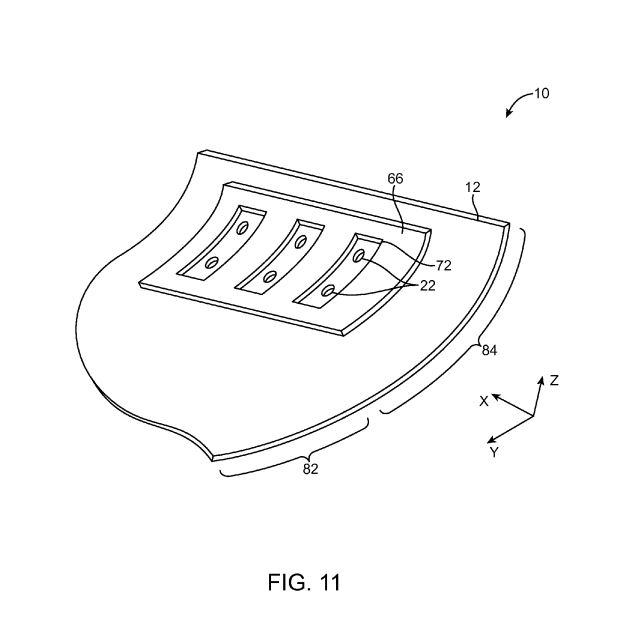Apple letting out more hints on waterproofing devices
It’s no secret that Apple has been investing further into ways to waterproofing devices, including the iPhone, iPad, and even MacBooks. The first actual evidence surfaced in April of this year, when Apple posted an opening for the position of Senior Wireless Charging Design Engineer, in the wake of rumors of Apple working on ways to build hermetically sealed devices, for which wireless DC/DC charging is a requirement.

Further evidence has appeared early this month, with news of a new patent entailing a method to repel liquids, as well as dust particles, using soundwaves, reversed-polarity hydrophobic electric charge, and possibly, even a modified version of the haptic feedback actuator, or similar mechanism.
The latest waterproofing-related patent, was filed this morning, and was developed by Kind Code’s Lee Sung Chang. The patent, titled “Electronic Devices With Housing Port Shutters”, describes an active method of waterproofing that involves internal shields, or shutters, designed to block liquids and particles from ingress, using a combination of sensors and actuators, the former of which is used to detect proximity of liquids or other airborne particles. Upon detection, the latter actuators will trigger port shutters, actively sealing the device.
Water Resistant Mark on your iPad?
Those who own a traditional “non-smart” wrist watch, will be familiar with the Water Resistant Mark on the opposite side of the watch face, which provides a reference on how well a watch fares underwater, based on the “ISO 2281 water-resistant watches standard”, set by the International Organization for Standardization.
By this token, while it’s not impossible for a mobile device other than a wristwatch, to be eligible for a similar watermark standardization, such as an iPhone or an iPad, the main issue with waterproofing a mobile device lays not with the ability to repel water, but rather how well the device deals with atmospheric pressure.
For instance, most higher-end wristwatches are eligible for 100-200 atmosphere waterproof watermarks, due to the materials used in the construction, such as stainless steel, which is capable of retaining their shape under heavy atmospherical pressure, which is important in order to keep the outer casing of the device from crushing the internal mechanisms.
With that said, for iOS devices to effectively sustain immersion, certain compromises must be made to meet pressure requirements, which are even more important than ways to block the mere ingress of water. This could mean finding a way to replace, or strengthen machined aluminum, to a point in which the device can, not only withstand sustained immersion, but also immersion at depths, without damage to internal components, as well as glass surfaces such as cameras and other external sensors.